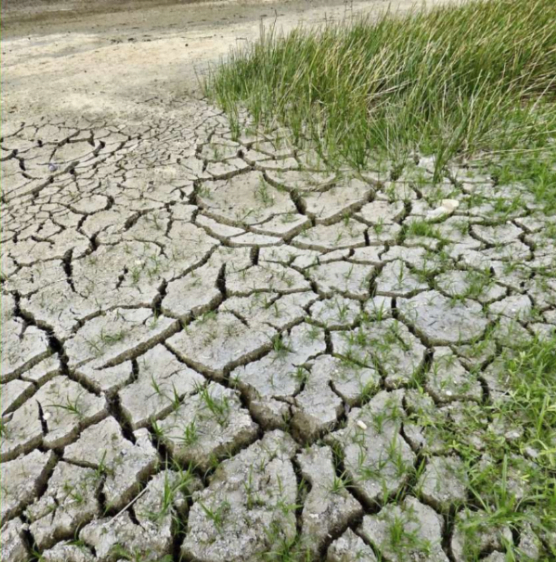Is Soil Health a Big Deal?

This content was originally published here by Solena Ag Inc.
At a glance:
- It takes more than a thousand years to generate from 1 to 3 centimeters of topsoil
- The global impact that human activities have taken on earth’s natural resources has increased over the last 150 years, leading to environmental and health issues
- Whether as consumers or as producers, it is essential that we know the consequences of not taking care of our soils
Soil is one of our most valuable resources and without it, life on Earth would not prevail.
Admittedly, we have heard this fact before. Maybe we learned about it at school or during a friendly conversation, but do we think of Soil Health as a big deal?
Aside from the trees and plants that we come across on the sidewalks and gardens, city dwellers aren’t quite in touch with nature and it might be easier to think that the issue surrounding Soil Health has nothing to do with us. However, the truth is that our wellbeing is strongly linked to this natural resource which, according to the Food and Agriculture Organization (FAO), is not renewable. 1
Here’s a bit of context…
Soil consists of:
- 45% of mineral matter
- 25% of water
- 25% of air
- And only 5% of organic matter found in the top layer
This top layer hosts a quarter of our planet’s biological diversity.2
It might not be obvious to the naked eye, but the soil is a complex ecosystem. Let’s take into consideration the fact that are more living organisms contained in a spoonful of healthy soil than people inhabiting our planet, or that it takes more than a thousand years to generate from 1 to 3 centimeters of topsoil.
In short: Soil Health must become a priority for all of us.
So, What Does Soil Health Mean?
This concept refers to the soil’s capacity to function as a living system while maintaining its physical, chemical and biological properties. Some Soil Health indicators include nutrient and oxygen availability to roots, carbon sequestration, fertility, and biological diversity. Unfortunately, we now know that while these factors decrease others such as toxicity, salinization, and contamination, increase. 3, 4, 5
The global impact that human activities have taken on Earth’s natural resources has increased over the last 150 years and, because of that, concerns about human health and environmental issues arise. No matter if we have a role as consumers or as agricultural producers, it is our responsibility to know the consequences of not taking care of our soils.
Current Soil Conditions
According to the first principle of the World Soil Charter, soils are fundamental to life on Earth, but human pressures on soil resources are reaching critical limits.
Practices such as monoculture and the use of agrochemicals such as fertilizers, pesticides, and herbicides are part of inappropriate soil management practices that focus only on the productivity of the crops and not on their quality. In addition, it is considered that these techniques of intensive agriculture, alongside with deforestation, are the main culprits when it comes to soil erosion.
So far, 33% of the world’s soil has already been degraded. However, according to Maria-Helena Semedo, a UN official from FAO, if the topsoil continues to deteriorate at the current rate, it will disappear in about 60 years.6
A Frightening Picture
Natural processes have their own logic, even if it’s not obvious. In this particular scenario, soils play a key role in processes such as carbon sequestration and the absorption of water which, in addition to feeding the microorganisms, reduce climate change.
On the other hand, the methods used by industrial agriculture not only threaten the environment but also represent an immediate risk to human health since at least 95% of our food comes from the soil.7
Having healthy soils is a must when it comes to ensuring the safety of our food but, as previously mentioned, the presence of toxicity and soil contamination have reached critical levels.
For instance, Consumer Reports revealed in a recent study that almost 50% of the fruit juices that were analyzed contained concerning levels of heavy metals. 8 If you wonder how come these metals end up in our food, the answer lies in the use of agrochemicals such as pesticides or in contaminated farmlands. 9, 10, 11
According to the study:
“Over many years, even modest amounts of heavy metals may raise the risk of bladder, lung, and skin cancer; cognitive and reproductive problems; and type 2 diabetes, among other conditions.”
Soil Health relies on our actions
So far, it is clear that the quality of the crops and the environment has a strong bond with the quality of the soils, but we must not forget that the consequences rely on us. Overall, soil sustainability is a key element for agricultural development, climate control, and resource preservation.
Sustainable agriculture seeks to maintain a high yield in crop production without sacrificing soil quality or food safety. In addition, sustainable soil management includes an approach that focuses on socio-cultural issues and the biological capital found in vegetation and microorganisms.
Lastly, how can we help sustain Soil Health?
As an agricultural producer: It is time to do some research and adopt sustainable techniques that not only keep your production going but add value to your crops. Testing the soil with a microbiological analysis, as well as applying plant growth-promoting microbes, cover crops and crop rotation techniques are some of the best alternatives to enhance your healthy lands.
As a consumer: You can opt for products that have been harvested organically, contact producers to push them into adopting soil-friendly practices or even join an association that is focused on promoting policies that favor the sustainable development of soils.
The most important thing is that you make Soil Health a relevant topic in your life and to keep researching. Follow this blog to learn more about Soil Health, sustainable agriculture and more!
References
1 http://www.fao.org/resources/infographics/infographics-details/es/c/278964/
2, 7 http://www.fao.org/3/i8864es/I8864ES.pdf
3 http://www.fao.org/soils-portal/soil-degradation-restoration/mejoramiento-de-la-salud-del-suelo/es/

